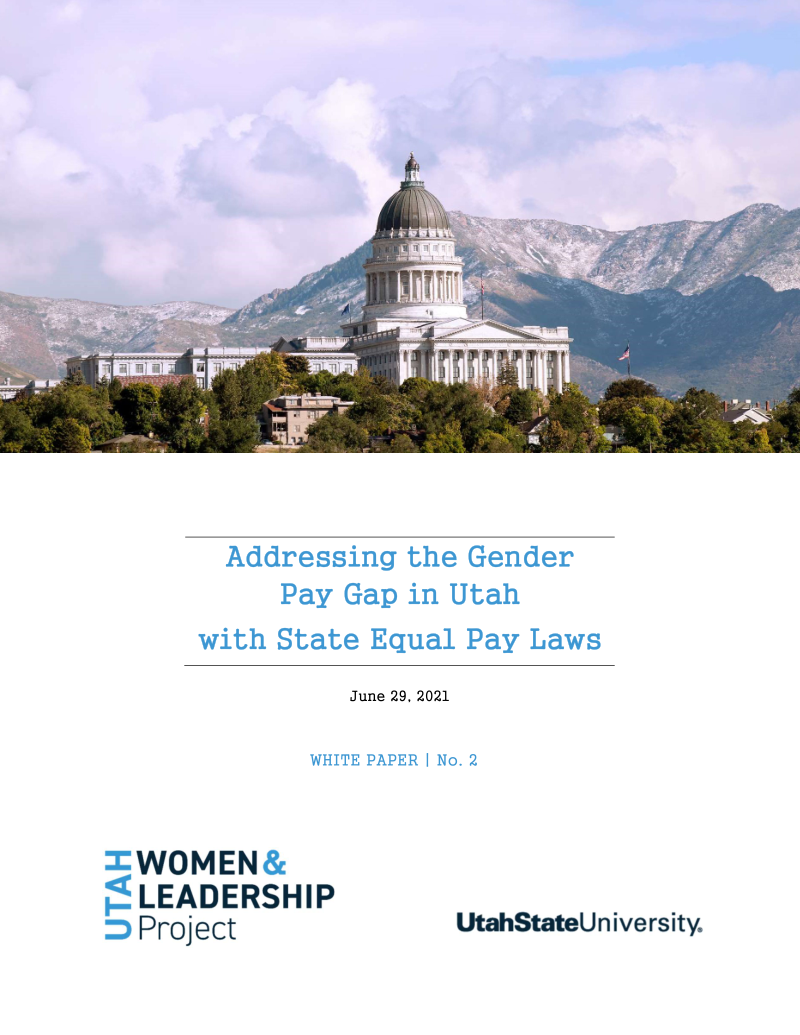Utah State university white paper recommends policies to address the gender wage gap in Utah.
- Type
- Academic / Technical Report
- Source
- L. Jenna Gould Non-LDS
- Hearsay
- Secondary
- Reference
L. Jenna Gould, Addressing the Gender Pay Gap in Utah with State Equal Pay Laws, White Paper No. 2, Utah Women & Leadership Project, Utah State University, June 29, 2021, 4-5
- Scribe/Publisher
- Utah State University
- People
- L. Jenna Gould
- Audience
- Reading Public
- Transcription
Given the dismal state of Utah’s gender pay gap and the continued frustration among Utah women, state lawmakers should strive to modernize the state’s antiquated regulatory framework for resolving equal pay disputes by adopting a standalone equal pay act that adheres to the best practices set forth by the overwhelming majority of U.S. states.
In particular, the state should provide Utah women with liberty-reinforcing avenues for recourse—such as a private right of action—so they can challenge pay discrimination on their own without resorting to a state agency or protracted federal process with the U.S. Equal Employment Opportunity Commission. As with most states, the statute of limitations for such a claim should be somewhere between 1-3 years to provide employees with adequate opportunity to exercise their rights under state law. Consistent with the Utah Antidiscrimination Act, any proposed equal pay law should have an express antiretaliation provision to protect workers pursuing their rights to equal pay for equal work. Moreover, Utah lawmakers should consider leading the way on free speech and equal pay protections by preserving employees’ right to reasonably discuss their wages through an express pay transparency provision. Additionally, restricting the use of salary history as part of the hiring process has been shown to help reduce an unexplained portion of the gender pay gap, and may be particularly applicable to Utah given the high number of women who return to work after extended absences from the workforce. It is also important to note that supplementing pay gap changes with other public policies—addressing paid family leave, the state’s childcare crisis, and economic security, for example—shows tremendous promise in creating economic self-sufficiency for Utah women and families.
Finally, Utah needs a more comprehensive study on the causes and effects of the state’s gender pay gap so state and local leaders can respond with targeted, efficient policy solutions, and thereby address one of the largest gaps in the nation and constituents’ voiced concerns. As such, this paper recommends the following policy solutions to address Utah’s gender pay gap and expand state and private remedies available to female employees:
1. ENACT A STANDALONE EQUAL PAY ACT, PROVIDING:
a. A PRIVATE RIGHT OF ACTION FOR AGGRIEVED EMPLOYEES
b. AT LEAST A 1-YEAR STATUTE OF LIMITATIONS
c. ANTIRETALIATION PROTECTIONS
d. PAY TRANSPARENCY PROTECTIONS
e. SALARY HISTORY BAN
2. CONDUCT A COMPREHENSIVE, STATEWIDE STUDY ON THE CAUSES AND EFFECTS OF UTAH’S GENDER PAY GAP
- Citations in Mormonr Qnas
The B. H. Roberts Foundation is not owned by, operated by, or affiliated with the Church of Jesus Christ of Latter-day Saints.

